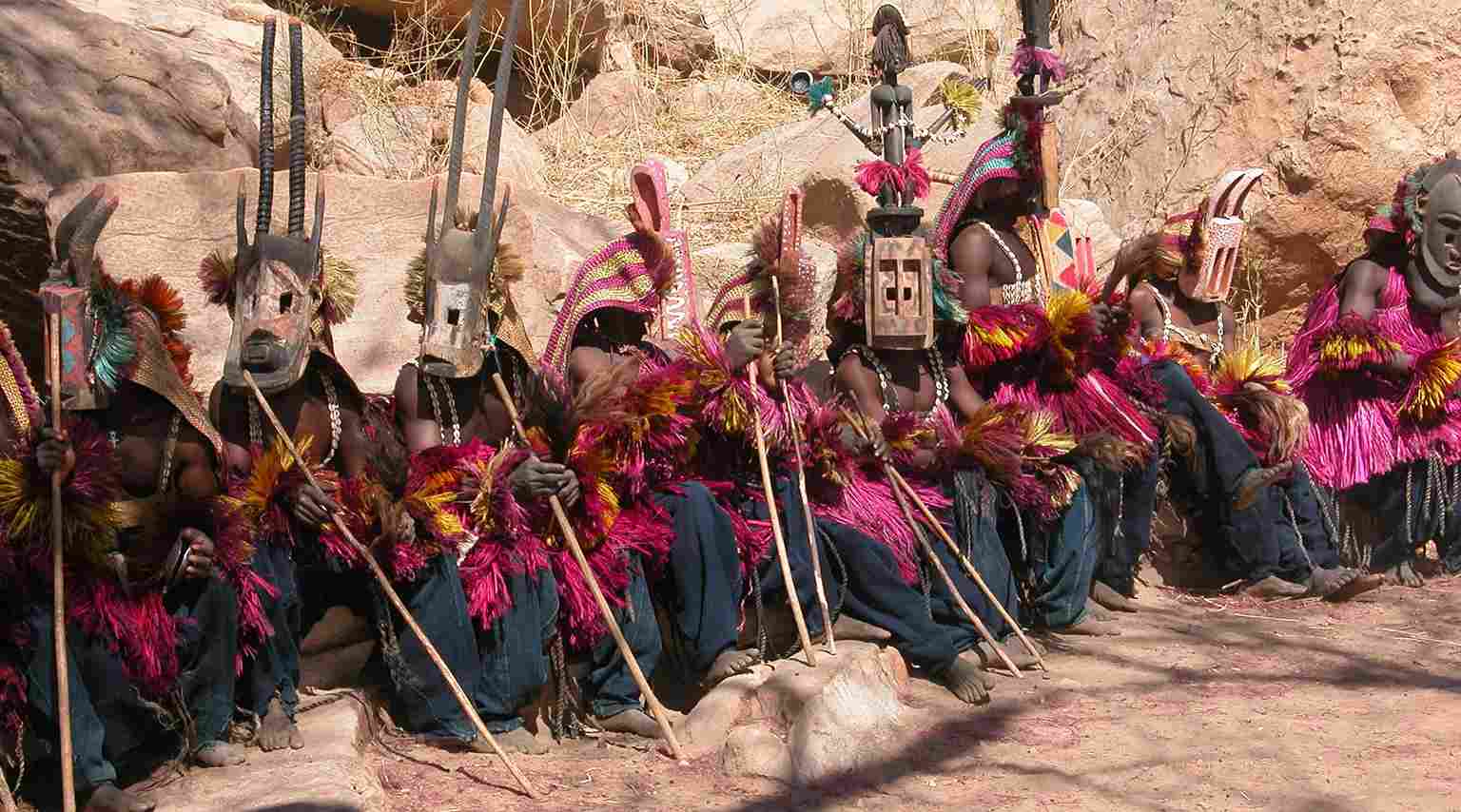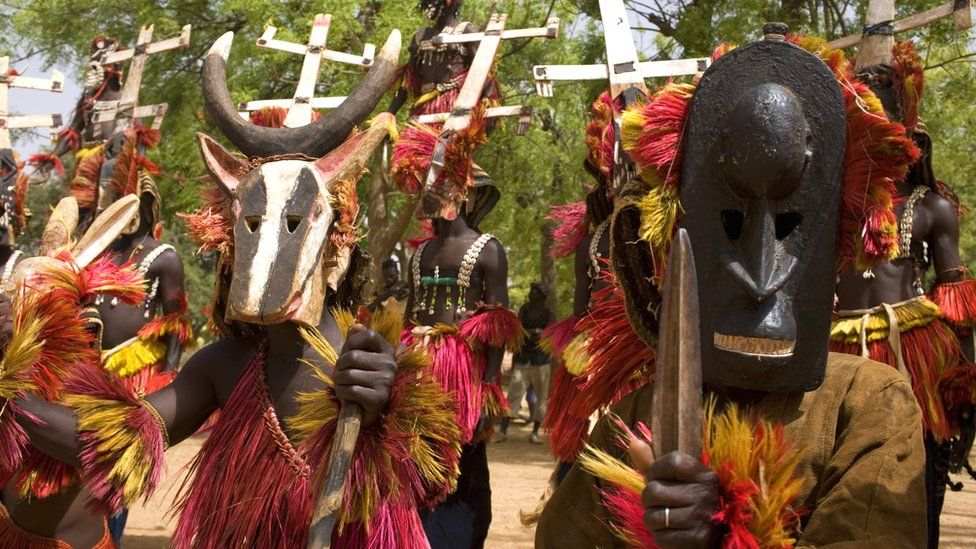The Dogon People
Nestled in the heart of Mali, West Africa, the Dogon people stand as a testament to the rich cultural tapestry that weaves through the continent. Renowned for their ancient traditions, intricate cosmology, and striking architecture, the Dogon have captivated the curiosity of historians, anthropologists, and adventurers alike.
In this exploration, we delve into the history, beliefs, and unique customs that define the Dogon people, shedding light on their extraordinary way of life.
Embrace the beauty of cultural diversity and enrich your understanding of the world! Learning about different cultures is an enriching journey that broadens our perspectives, fosters empathy, and fosters respect for one another. It allows us to appreciate the unique traditions, values, and customs that shape the identity of various communities around the globe. Learn about the Hamer Tribe, the Hadza Tribe, the Sami, the Akha People, the Aymaraes, the Kazakh People and the Adivasi on AmplifyGlobe.

Historical Roots of the Dogon People
To comprehend the Dogon people's enigmatic culture, one must journey back in time to the 15th century when they migrated to the Bandiagara Escarpment, a sandstone cliff stretching nearly 150 miles in length. This rugged terrain, with its caves and crevices, became the canvas on which the Dogon painted the story of their civilization.
The Dogon's journey from the plains of the Niger River to the Bandiagara Escarpment marked the beginning of their distinct way of life. Unlike many other African societies, the Dogon managed to preserve their customs and traditions through the centuries, fostering a unique cultural identity that continues to intrigue scholars and researchers.
Socio-Cultural Fabric: The Dogon People's Way of Life
At the core of Dogon society is a communal ethos that binds individuals together in a complex web of relationships. Family units, known as 'lubo,' are central to their social structure, forming the building blocks of Dogon communities. The strength of these familial ties extends beyond mere kinship, shaping the Dogon's collective identity and influencing their day-to-day activities.
Transitioning from the family unit to the village, the Dogon people exhibit a strong sense of solidarity. Villages are not just clusters of huts; they are living entities where communal activities such as farming, hunting, and ceremonies take place. The rhythm of life in a Dogon village echoes with the harmonious collaboration of its residents, creating a social fabric that has withstood the test of time.
The Dogon and Their Unique Cosmology
One of the most distinctive aspects of Dogon culture is their complex cosmology, a system of beliefs that intricately weaves together the spiritual and natural worlds. At the heart of this cosmology is the reverence for Nommo, mythical ancestral beings believed to be the creators of the universe.
Transitioning from the tangible to the intangible, the Dogon oral tradition serves as a conduit for passing down the intricate details of their cosmology from generation to generation. Griots, the storytellers and keepers of the Dogon's oral history, play a vital role in preserving the cosmological knowledge that forms the backbone of Dogon spirituality.
Sacred Spaces: Dogon Architecture
The Dogon's reverence for the divine is not confined to abstract beliefs but extends into the realm of architecture. The cliffside villages of the Bandiagara Escarpment, with their labyrinthine design, exemplify the Dogon people's architectural prowess. Transitioning from the dusty plains to the elevated cliffs, these villages are a testament to the Dogon's ability to adapt to their environment while maintaining a spiritual connection.
The dwellings in these cliffside villages are constructed with a meticulous attention to detail, showcasing the Dogon's architectural ingenuity. The granaries, with their conical thatched roofs, stand like sentinels overlooking the vast expanse below. Transitioning from one building to another, narrow alleyways and staircases carve through the cliffs, connecting the different levels of the village and mirroring the interconnectedness of Dogon society.
Dance of the Masks: Dogon Rituals and Ceremonies
No exploration of the Dogon people would be complete without delving into their vibrant rituals and ceremonies, where masks take center stage. The Dogon use masks not merely as artistic expressions but as powerful tools to commune with the spiritual realm. Transitioning from the mundane to the sacred, these masks become vessels through which the Dogon can channel the energy of the Nommo, invoking blessings and protection for the community.
Dogon rituals are characterized by lively dance performances, with each movement carrying profound symbolic meaning. These dances serve as a dynamic expression of the Dogon people's spiritual connection, and the rhythmic beat of drums accompanies the dancers, creating a mesmerizing spectacle that transcends the boundaries of time.

The Sirius Mystery: Dogon Astronomy
The Dogon people's knowledge of astronomy has long been a subject of fascination and debate. Transitioning from the earthly to the celestial, the Dogon's understanding of the Sirius star system has perplexed astronomers and researchers for decades. According to Dogon cosmology, the Nommo, their mythical ancestors, originated from the Sirius star system.
While skeptics argue that the Dogon's knowledge could be attributed to external influences, proponents suggest that it might be a result of ancient astronomical observations. The mystery of how a pre-modern society could possess such detailed knowledge of celestial bodies continues to captivate the imaginations of scholars, prompting further research and exploration.
Challenges and Preservation Efforts
In the face of modernity, the Dogon people find themselves at a crossroads. Transitioning from a traditional way of life to an era of globalization brings both opportunities and challenges. As external influences permeate their communities, the Dogon must navigate the delicate balance between preserving their cultural heritage and adapting to the changing world.
Efforts to preserve Dogon culture have gained momentum in recent years, with initiatives focusing on education, cultural exchange, and sustainable development. Transitioning from isolation to engagement, the Dogon people are finding ways to share their unique traditions with the global community while safeguarding the essence of what makes them truly extraordinary.
Conclusion
The Dogon people, with their cliffside villages, intricate cosmology, and vibrant rituals, stand as a testament to the richness and diversity of African cultures. Transitioning through time, their history is etched into the sandstone cliffs of the Bandiagara Escarpment, a living testament to resilience and adaptability.
As we unravel the mysteries of the Dogon, we discover not just a people but a way of life intricately woven into the fabric of the African continent. The Dogon invite us to explore the delicate dance between tradition and modernity, offering insights into the human experience that resonate far beyond the boundaries of Mali. In the footsteps of griots and masked dancers, we find a cultural tapestry that enriches our understanding of the world and the remarkable people who call it home.